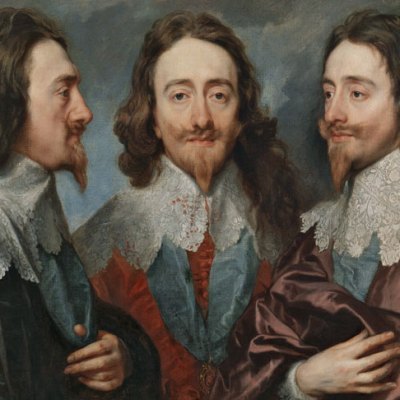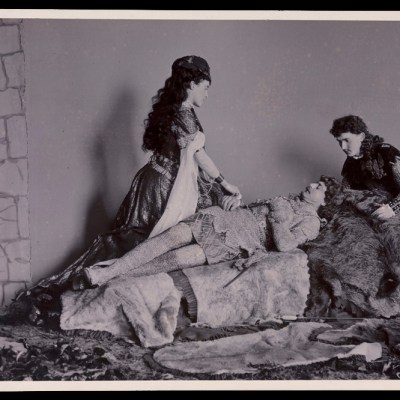From the March 2021 issue of Apollo. Preview and subscribe here.
‘Oh! dear, oh! dear if only I could find the history of all these things, how interesting it w[ou]ld be,’ sighed Mary, Princess of Wales in 1909, ‘but alas there is no inventory, nothing.’ On this occasion the subject of regret was a recently purchased group of silver candelabra bearing the cypher of George IV. However, the despairing desire for an inventory was a common exclamation from Mary, who, from 1910, reigned as queen consort to George V. Until her husband’s death in 1936, Queen Mary held joint sway over the entirety of the Royal Collection – then, as now, one of the largest surviving private collections in the world. She swelled its holdings (‘my one great hobby’), adding more than 2,000 paintings, books, photographs, and decorative-art objects, including a significant collection of Chinese jade and hardstones. She appears beside some of her jade in a photograph of 1924 by Emil Otto Hoppé (later reproduced in the Illustrated London News), her hand on a glowing vitrine, gazing down at its contents.
However, Queen Mary also devoted herself to ‘arranging’ such parts of the collection as fell under her notice, considering that many things ‘were changed [at Buckingham Palace] + at Windsor much too quickly by our predecessors’. Acting as half curator, half inventory clerk, and frequently passing her discoveries on to her Surveyors (Lionel Cust and, later, C.H. Collins Baker), she found that she could ‘simply spend hours going over the Castle, matching things up, finding pairs to pieces of furniture etc’. The desire to bring administrative order to perceived chaos feels characteristic of the staid and solid woman now best remembered as Elizabeth II’s dowager grandmother. Even so, the enjoyment of the task occasionally drew the queen consort to unexpected grammatical excess. A letter of 1912 breathlessly describes ‘routing out nice old furniture + things in the Palace stores which no one but the Furniture inspectors had touched for years!!!’.
Portrait of Queen Mary by E.O. Hoppé, taken in 1924 and reproduced in the ‘Illustrated London News’ in July 1929.
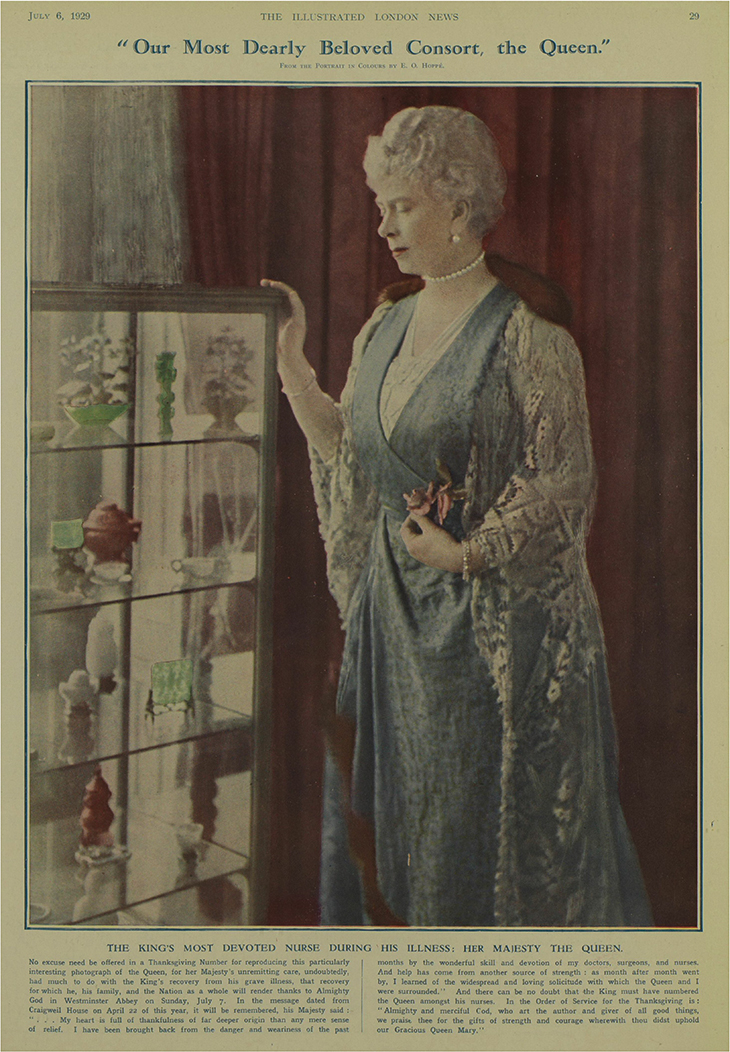
In organising and adding to the Royal Collection, Queen Mary illuminated parts of its history, but she also helped solidify the identity of the British monarchy in the early 20th century as enduring, family-focused and, where necessary, thrifty. ‘It is really rather wonderful what we have managed to collect + get together since we married, quite a creditable collection of family things […] without spending much money over it,’ she wrote, voicing a concern that had never troubled her great-uncle, George IV, in his weekly purchases of jewellery, military uniforms and gold boxes. Among these ‘family things’ were two large pendants of Frederick, Prince of Wales and his wife, Augusta, possibly painted to commemorate their marriage in 1736. Allegorical cherubs gambol about the curtains and architecture; the paintings are sometimes attributed to William Hogarth, on an opportunistic mission to secure royal patronage. Queen Mary bought them in 1929. Framing acquisitions like these as modestly acquired relics of great-grandparents allowed Mary to participate in an ongoing attempt to remodel the British monarchy as a royal ‘family’ above all else. This project had begun with the first scions of the Hanoverian line – the bluff George III was remembered by the publisher Charles Knight as ‘that most respectable and amiable of country squires’ – but had been solidified by Victoria and Albert, who redefined themselves, with Windsor as their emblem, as (in the words of one journalist writing in 1895) ‘a model home at the apex of English society’.
This point was duly recognised by many of the writers reporting on Mary’s activities. In 1932, the Illustrated London News wrote that she ‘ha[d] always loved home life, and while cultivating the domesticities ke[pt] an ideal of “the home beautiful”’, and even found time between official engagements for ‘various hobbies, especially that of collecting art treasures […] and bric-à-brac’. Projects such as the ‘Chinese Chippendale Room’ , begun by Queen Mary at Buckingham Palace in 1912 with the assistance of the interior decorator Charles Allom (who would later work on the Waldorf-Astoria Hotel) encapsulated this vision of the ‘home beautiful’. ‘Treasures’ were here arranged as part of a plush, 18th-century inspired domestic environment, the green furnishings and Orientalist swirls linking the room thematically with its generally Chinese contents.
Charles II presented with a pineapple (c. 1675–80), unknown artist (British school). Royal Collection Trust. Photo: Royal Collection Trust/© HM Queen Elizabeth II 2021
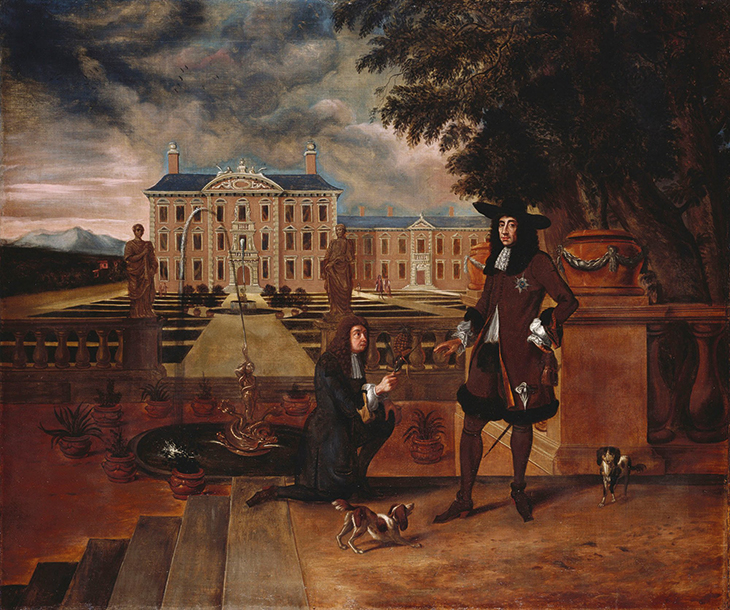
However, for Queen Mary, arranging and adding to the Royal Collection often went hand in hand with combing through the history of that collection, and particularly the lessons it offered in royal family history. Many of the items in the Chippendale Room were not newly acquired, but simply moved from elsewhere in the royal residences, and most of the paintings she bought – including Frederick and Augusta – were portraits of royal predecessors. A curious (and anonymous) depiction of Charles II being presented with a pineapple effectively combines an image of a monarch with a key piece of historical, horticultural anecdote. Images of George III and his children, similarly, abounded on the gold boxes and miniatures she acquired and arranged, lovingly, both in themed rooms, and in museum-style vitrines. A room in the Round Tower at Windsor was given over to a display of specifically ‘family’ souvenirs and ‘relics’, as was the ‘Lace Room’, and part of Frogmore House, a sporadic royal residence until the 1930s. Though immediate family history always exerted a special force, Queen Mary’s interest extended, too, to the more romantic of the Stuarts: the likenesses of Mary, Queen of Scots, the Old Pretender, and Bonnie Prince Charlie gazed out from walls and cases at Holyrood House, and in a dedicated ‘Stuart Room’ at Windsor. Selected results of her routs in the stores were also made public, lent to a dedicated ‘family museum’ at Kensington Palace, established in 1912 along the lines of the Musée Carnavalet in Paris. Subsequently moved to Lancaster House, and retitled the ‘London Museum’, its galleries displayed a motley selection of memorabilia from the Royal Collection: the cradles in which notable babies had been rocked; the chair in which Queen Charlotte had died, and Mary’s own wedding dress and trousseau. The project itself would later become the Museum of London.
Queen Charlotte with Princess Augusta and Princess Charlotte (c. 1773) made by Chelsea Porcelain and Derby Porcelain Works after a portrait by Johan Zoffany. Royal Collection Trust. Photo: Royal Collection Trust; © HM Queen Elizabeth II 2021
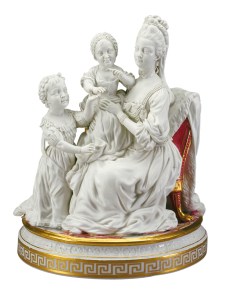
Mary’s lifelong fascination with royal history and the Royal Collection reflects her own reverence for the throne – and, possibly, her own uneven path to it. Born Princess Victoria Mary of Teck in 1867, and known until her accession as ‘May’, she was the only daughter of Francis of Teck, and Princess Mary Adelaide. The larger than life and perennially cash-strapped Mary Adelaide had an unimpeachable ancestry as the daughter of George III and Queen Charlotte’s youngest son, Adolphus, making her a cousin of Queen Victoria. Her husband, Francis, a prince of Württemberg whom she married at the late age of 30, was the product of a morganatic marriage, and therefore of lower rank. Once established as queen consort, and thereby free of the awkward consequences of this ambiguous social status, Mary was always attentive to the Württemberg lines of ‘the family’, and felt a particular affinity with Queen Charlotte, a queen consort with her own roots in what is now north-eastern Germany. Like Mary, Charlotte had had a yen for collecting, particularly in the decorative arts (Josiah Wedgwood commemorated her support in the title of his cream-coloured ‘Queen’s Ware’) and much of Mary’s work on the Royal Collection emphasised her sense of trans-historical affinity with her predecessor. A portrait of Charlotte as Princess of Mecklenberg-Strelitz, by Johann Georg Ziesenis, was presented to Mary by a member of the Rothschild family in 1923. In 1913, she established a ‘Wedgwood Room’ next to her sitting room at Windsor, combining items from the Collection, many with a link to Charlotte, with ‘a few old Wedgwood China things of my own’. Around the same time she acquired Ziesenis’s portrait, Mary also obtained a fan depicting Charlotte’s marriage to George III and, in the following year, purchased a biscuit porcelain group of the couple and their family based on the 1770 portrait by Johan Zoffany.
Many of Mary’s thoughts on these acquisitions survive thanks to her longstanding correspondence with the Schloss Neustrelitz’s 20th-century occupant, the Grand Duchess of Mecklenburg-Strelitz. Until her death in 1916, ‘Aunt Augusta’ remained a favourite confidante in life and in politics: having grown up in England with a fervent, if unorthodox, belief in the divine right of kings, she shared her niece’s reverent devotion to royal tradition and history. For Mary, the duchess’s age – she had been born in 1822 – also made her something of an archive in herself, and a frequent recourse for the queen consort when inventories and other forms of written record were wanting. Neustrelitz had its own ‘family museum’, assembled around the same period as Mary’s ‘arrangements’, and for both aunt and niece the care of royal objects spoke directly to the great themes of inheritance, ancestry and royal legitimacy. ‘Only think they even sold […] the garter robes worn by Charles I. It makes my blood boil to think that all these historical souvenirs should have disappeared,’ Mary exclaimed to Augusta on reading a copy of the 1649 sale catalogue of ‘the late king’s goods’, significantly conflating the dispersal of a collection with the deposition of its owner.
Fan depicting ‘The Marriage of King George III and Princess Charlotte of Mecklenburg-Strelitz, 1761’ (1761). Royal Collection Trust. Photo: Royal Collection Trust; © HM Queen Elizabeth II 2021
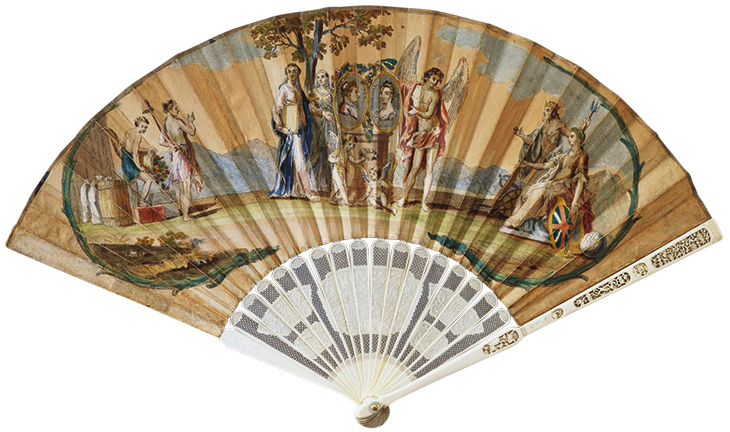
Mary’s own accession to royal robes had come, ultimately, through the good opinion of Queen Victoria. Finding her ‘v[er]y carefully brought up & so sensible’, the ageing queen came to consider Princess May, as one of the comparatively few great-granddaughters of George III not directly descended from herself, an almost uniquely eligible mate for one of her less than sensible grandsons. In 1891, she was engaged to the heir presumptive to the throne, Prince Albert Victor, firstborn son of Edward, Prince of Wales. It was hoped that the match would help cure ‘Eddy’ of his general ‘apathy and disinclination to work’, but the engagement was hardly established before it was dissolved by his death, during a resurgence of the 1889–90 European flu pandemic. In the period of mourning that followed, Eddy’s younger and distinctly more reliable brother, George, Duke of York, succeeded to the twin positions of heir presumptive and fiancé to Princess May. As George V and Queen Mary, the couple ruled for 26 years, and became avatars of continuity, fixed and unalterable, so much so that Mary kept her hairstyle much as it had been on her wedding day in 1893 until her death in 1953.
Queen Mary’s contributions to the Royal Collection have not gone unremarked: the Dolls’ House assembled for her between 1921 and 1924 by Edwin Lutyens and one of Queen Victoria’s more obscure grandchildren, Princess Marie Louise, is a staple of the Windsor Castle tourist route. However, her habits of collection and, particularly, curation have largely been eclipsed in the popular imagination by the activity and acquisitions of showier predecessors, and primarily monarchs, rather than consorts. The lost collection of Charles I included Renaissance masterpieces purchased to compete with the princely collections of Europe; George III accidentally acquired Vermeer’s Lady at the Virginals with a Gentleman as part of a job lot of Canalettos in 1762. As well as gold boxes, bibelots, prints and drawings, his son George IV also accumulated a significant number of Dutch Golden Age paintings, his relentless acquisitiveness went hand in hand with his legendary self-indulgence. After the death of George IV in 1830, the gossipy courtier Charles Greville recorded the distressing state of his more informal collection: ‘[T]here never was any thing like the quantity of trinkets and trash that they found. He had never given away or parted with any thing.’
Snuff box inset with a coronation medal of George IV (c. 1821), attributed to Rundell, Bridge & Rundell. Royal Collection Trust. Photo: Royal Collection Trust; © HM Queen Elizabeth II
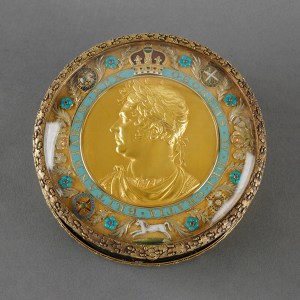
Queen Mary did not think much of Greville, whose memoirs she read in 1909 and pronounced ‘ill natured’, but his description of George IV’s ‘trinkets and trash’ must, even so, have resonated. As both an aficionado of the English 18th century, and also an avid collector of bibelots, miniatures and objets d’art, Mary was always interested in the collecting and notation practices of one of the Royal Collection’s most significant contributors. She acquired dozens of miniatures and intaglios bearing George IV’s likeness and, when a group of his bills resurfaced in 1913, sat down with a pencil to comb through them, identifying those items she could, and informing future archivists where in the residences she had put them. This activity complemented the focus of her acquisitions, which usually had some kind of prior claim, either because they represented members of the royal family, or because they had previously been owned by one of them. The source for the biscuit group, Zoffany’s portrait, remains in the Collection today, and a miniature reproduction of the Ziesenis painting had previously been set into a gold box by Charlotte’s son, George IV (Queen Mary displayed it in a vitrine at Windsor, beside a number of other images of Charlotte and her children).
Box (1749/80), English. Royal Collection Trust. Photo: Royal Collection Trust; © HM Queen Elizabeth II 2021
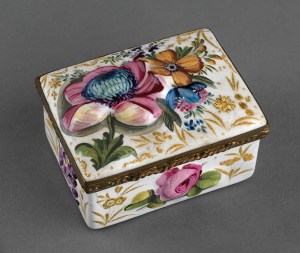
In general, Mary frequently sought to fill gaps in the collection, or supplement its strengths, rather than seeking to impose a new identity on the holdings. As such, her activities were almost pointedly self-effacing: tidying the chaotic leavings of princely collectors past, and reversing regrettable dispersals. The sale of Charlotte’s private collection in 1819 (‘a sacrilege’) and George IV’s gold and jewellery in 1830 were often on her mind as she trawled dealers’ shops and catalogues and, occasionally, the collections of friends and acquaintances. Fond though she was of rummaging through shops such as H. Blairman & Sons, where she was photographed (probably at its Harrogate branch) in the 1930s, and W. F. Greenwood in York, a perennial favourite, many of her most significant additions were strategic gifts from friends, acquaintances, favour-seekers and fellow collectors. The most significant of the latter was Georgina (‘Gian’), Lady Mount Stephen, a former lady-in-waiting to Mary Adelaide, who, over the course of her life, presented Queen Mary with more than a hundred boxes, bibelots and other small decorative items. A small mid 18th-century enamel box with horticultural emblems, said to have belonged to Queen Charlotte, was a typical example, presented to Mary for Christmas in 1921. It was with Lady Mount Stephen that Mary compared notes on those few public auctions she did attend, though since both women bid anonymously, this occasionally gave her cause for concern. Complaining of the prices at a silver sale of 1911, Mary recalled that one agent had apparently had ‘carte blanche to purchase for an American customer[.] I wonder,’ she wrote, ‘whether that was you!!! We really ought to compare notes another time.’
In emphasising familial anecdote, and the physically small, Mary’s collecting activities helped underline her status as a national wife and mother, organising, tidying, clearing up – even as her notations on books, inventories and historic receipts inscribed whole swathes of the Collection indelibly with the ubiquitous ‘Mary R’. Though inevitably forced by protocol to relinquish custody of the collection proper after her husband’s death in 1936, Mary retained her private collection of royal souvenirs at Marlborough House, and continued to make notes on the Royal Collection, and dispatch them to her successors, well into the 1940s. After her death in 1953, Frank Davis wrote in a commemorative issue of the Illustrated London News that, unlike the ‘great collectors of the past’, who ‘either specialised in one chosen subject, or kept their heads so high in the clouds that ordinary mortals found it difficult to follow them’, Queen Mary had taken ‘delight in the hundred-and-one ways in which good craftsmen […] have tried to give to ordinary day-to-day existence a gracious background’. Characterising her as a kind of grandiose angel in the house, he concluded she had ‘kept closer to earth and ranged wider, for women can worship a multiplicity of household gods – they have homes to make’.
The reign of George V took place against a background of unprecedented turbulence, both at home and abroad. Mary’s diary and letters record the First World War (‘what brutes the huns are!’), the rise of ‘The Socialists’ and (scarcely less appalling) the ‘wild schemes’ of Asquith’s Liberal government and the struggles of the suffragettes (‘there seems no end to their iniquities’). For the queen consort, collecting and organising the relics of her forebears gave her a reassuring sense of permanence, a distraction from the worrying uncertainties of modern life. ‘It seems to me that “finesse” has gone out of the world,’ she complained in April 1914, as war loomed in Europe. ‘My relaxation here to take my thoughts off graver subjects is studying some very interesting catalogues of the Carlton House furniture, china + treasures + trying to ascertain where they are now placed.’
From the March 2021 issue of Apollo. Preview and subscribe here.
